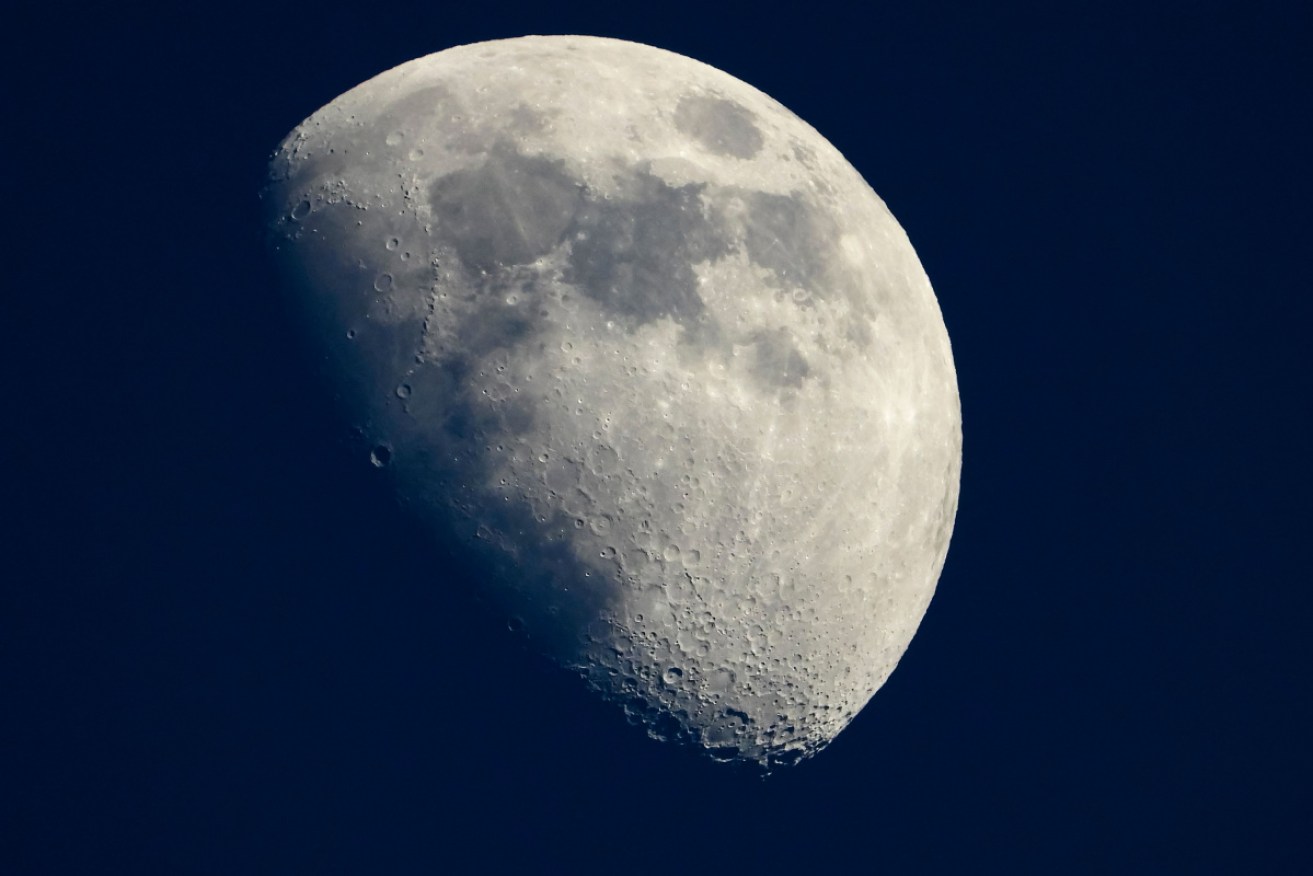The Moon is shrinking – and getting wrinkles


New research released this week has compiled decades of evidence to show the Moon is still active. Photo: Getty
The Moon is not only shrinking as it ages, it’s also getting wrinkles, decades-long observations released this week have revealed.
Over the past several hundred million years, scientists have estimated the Moon has shrunk by about 50 metres – and as it slims down, its surface is developing wrinkles.
The study from the Smithsonian’s National Air and Space Museum showed the brittle crust that is the Moon’s surface cracks as it wrinkles, which in turn creates “moonquakes” – like earthquakes, but on the moon, where one section of the surface is thrust upwards over another.
The faults appear as stair-shaped cliffs that are about 10 metres high, and run for several kilometres. Some are so steep – like one in the Taurus-Littrow valley – that astronauts Eugene Cernan and Harrison Schmitt were forced to take their lunar rover up and over a “fault scarp” in a very creative fashion, during the Apollo 17 mission.
It was on the Apollo missions that the findings of the study, published this week in Nature Journey, began.
Apollo 11, 12, 14, 15, and 16 all placed seismometers on the Moon’s surface during their lunar missions, from 1969 through to 1977. The instruments recorded a series of shallow moonquakes, usually between two and five on the Richter scale.
Tweet from @NASAMoon
But it wasn’t until recently that scientists were able to make sense of the recorded data.
Dr Thomas Watters, a senior scientist at the museum’s Centre for Earth and Planetary Studies, led the study. He used a new algorithm to analyse the data gathered all those moons ago.
“Our analysis gives the first evidence that these faults are still active and likely producing moonquakes today as the Moon continues to gradually cool and shrink,” Dr Watters said, as reported by NASA.
“Some of these quakes can be fairly strong, around five on the Richter scale.”
The Apollo missions’ evidence was backed up by images taken by NASA’s Lunar Reconnaissance Orbiter, which packs a camera that captured highly detailed images of the faults.
What they found
Dr Watters and his team’s study discovered that eight of the almost 30 shallow quakes picked up by the Apollo missions were within 30 kilometres of visible faults, providing enough evidence to link the two events.
The research further revealed six of these quakes happened when the Moon was at or near its apogee (the farthest point in its orbit from Earth).
Altogether, it shows that it’s highly likely the Moon is still active and evolving.
“We think it’s very likely that these eight quakes were produced by faults slipping as stress built up when the lunar crust was compressed by global contraction and tidal forces, indicating that the Apollo seismometers recorded the shrinking Moon and the Moon is still tectonically active,” Dr Watters said.
So what does it mean for space and science in general? The research strengthens the importance of collecting and holding onto data across decades, and allows scientists to plot in greater detail the next steps in Moon missions.
Tweet from @NASAJPL








